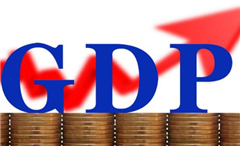Chinese economy in good shape in Q1
2019-04-17
Xinhua
BEIJING — The Chinese economy got off to a good start in 2019 as more indicators showed positive signs of stabilization for the first quarter (Q1) of this year.
The world’s largest developing economy beat market expectations to advance 6.4 percent year-on-year in Q1, remaining flat with the GDP expansion in the previous quarter, data from the National Bureau of Statistics (NBS) showed on April 17.
UPBEAT DATA
Fresh data released on April 17 added to good previous economic indicators, pointing to expansionary economic activity and improving economic structure.
The tertiary sector reported the strongest growth in added value by expanding 7 percent to reach 12.232 trillion yuan, which accounted for 57.3 percent of the total Q1 GDP, picking up by 0.6 percentage points compared with Q1 2018.
Q1 industrial output expanded 6.5 percent year-on-year, picking up from the 5.3-percent growth in the January-February period, while growth of retail sales of consumer goods also quickened from the first two months by growing 8.3 percent year-on-year, consolidating consumption’s prominent role in driving growth, which contributed 65.1 percent of the GDP in the first quarter.
Fixed-assets investment, property investment and trade in Q1 all grew faster than the January-February period, with signs of optimizing structure such as robust investment in high-tech manufacturing and services.
The surveyed unemployment rate in urban areas edged down by 0.1 percentage points from the previous month, while per capita disposable income climbed 6.8 percent year-on-year in real terms.
The Chinese economy performed within an appropriate range in Q1, with majority of the indicators faring better than expectations in March, NBS spokesperson Mao Shengyong told a news conference. “Market expectations are improving and positive factors are mounting.”
POLICY DIVIDENDS UNLEASHING
Mao attributed growing confidence in China’s development to the roll-out and implementation of a string of supportive policies.
China highlighted stabilizing employment, trade, investment, finance, foreign investment and market expectations and took counter-cyclical adjustment measures in Q4 2018.
Targeted steps were taken to expand effective investment and domestic consumption earlier this year while the government decided in March to cut taxes and fees for the public and enterprises.
Data from the central bank showed that new yuan-denominated loans and newly-added social financing all posted faster growth in March, indicating that the financial sector is playing a bigger role in supporting the real economy thanks to policy guidance.
“China’s more nuanced approach to stimulus this time around has nonetheless translated into a pronounced market bounce,” UBS said in a note when commenting on the country’s strong factory activity expansion in March.
The People’s Bank of China said on April 15 that it would strengthen coordination between monetary, fiscal and other policies to keep growth stable and forestall risks.
STEADY GROWTH ON TRACK
The stable Q1 performance has laid a sound foundation for the stable and healthy economic development of the whole year, the NBS said.
China aims to expand its GDP by 6-6.5 percent this year.
While downgrading global growth forecasts, the International Monetary Fund last week revised up China’s 2019 growth projection by 0.1 percentage points to 6.3 percent, citing factors including the recent developments in the China-US trade talks and China’s stronger-than-expected expansionary fiscal policy.
Martin Raiser, World Bank country director for China, said the 6.4 percent Q1 GDP growth was a sign that economic activity had stabilized. “The turn of the credit cycle is expected to lead to an upswing in the second half of the year.”
The economic downward pressure still persists given global uncertainties and domestic structural issues, Mao said.
The government will redouble efforts to implement policies to ensure the economy performs within an appropriate range and advance the high-quality development, Mao added.


